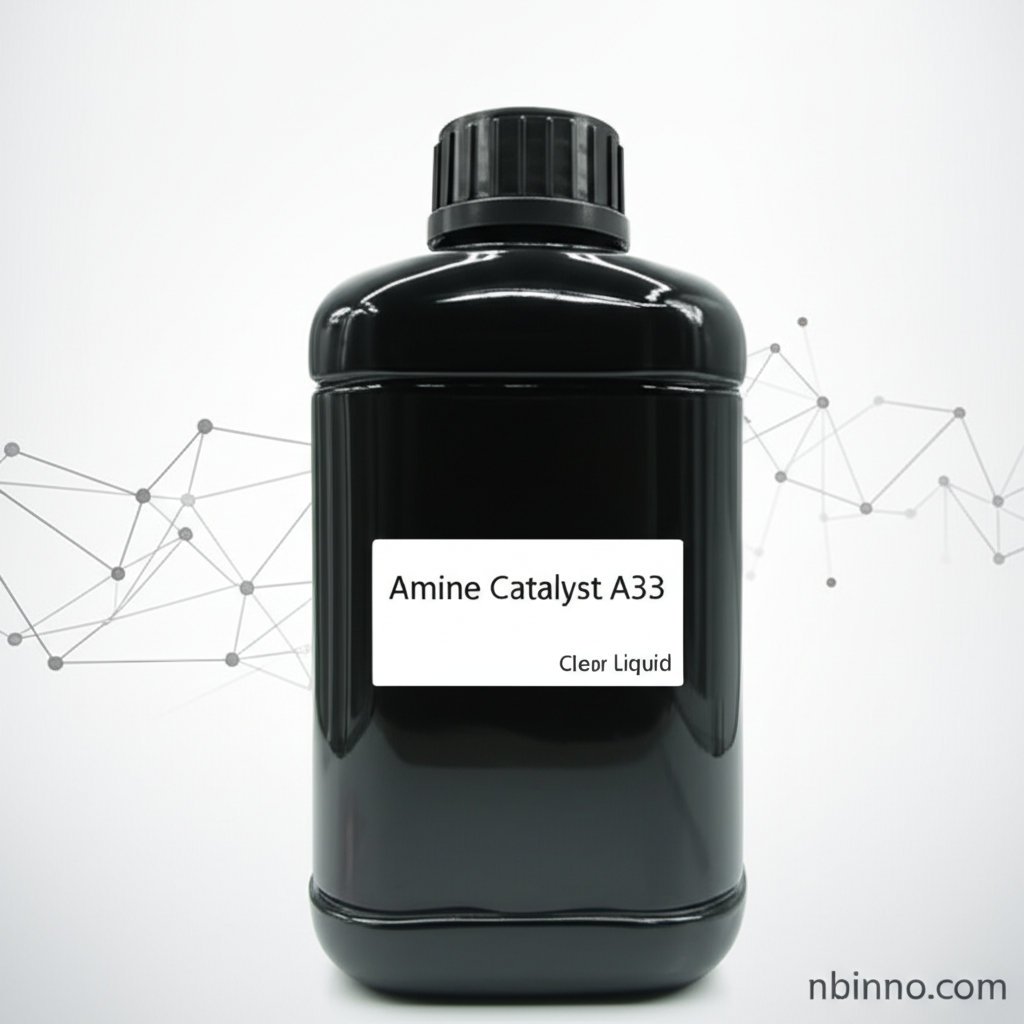Amine Catalyst A33: Enhancing Polyurethane Flexible Foam Production Efficiency
Discover the key to superior polyurethane foam. Amine Catalyst A33 drives innovation in flexible and rigid foam applications.
Get a Quote & SampleProduct Core Value

Amine Catalyst A33
Amine Catalyst A33 is a tertiary amine catalyst that significantly influences the urethane (polyol-isocyanate) reaction across various flexible and rigid foam applications, as well as CASE (Coatings, Adhesives, Sealants, and Elastomers). Its composition, typically 33% triethylene diamine and 67% dipropylene glycol, ensures efficient catalysis for improved foam formation speed and stability, making the production process more efficient.
- This crucial catalyst enhances foam formation speed and stability, a key benefit when aiming for improved polyurethane foam production efficiency.
- Leveraging triethylene diamine for effective gelation, this catalyst is pivotal for achieving desired properties in flexible PU foam formulations.
- The inclusion of dipropylene glycol ensures a stable and easy-to-handle liquid form, simplifying its use in various industrial settings.
- Ideal for applications requiring high resilience, this catalyst contributes to the overall quality and performance of the final foam product.
Advantages Offered by the Product
Enhanced Production Efficiency
The catalyst's ability to speed up foam formation directly translates to higher throughput and better polyurethane foam production efficiency for manufacturers.
Superior Foam Quality
Experience improved foam elasticity, density, and resilience, ensuring that products meet the demanding requirements of industries like furniture and mattresses.
Versatile Application Range
From flexible and rigid foams to CASE applications, this catalyst offers broad utility, making it a valuable component in diverse polyurethane formulations.
Key Applications
Furniture Industry
A cornerstone for producing high-quality foam for sofas, chairs, and cushions, contributing to comfort and durability in furniture manufacturing.
Mattress Manufacturing
Speeds up the production of mattress foam, enhancing overall efficiency while ensuring optimal foam characteristics like resilience and comfort.
Footwear Industry
Facilitates the efficient production of foam for insoles and other shoe components, contributing to comfort and performance.
Automotive and Construction
Used in automotive interiors and building insulation, where consistent foam properties are critical for performance and energy efficiency.
